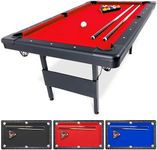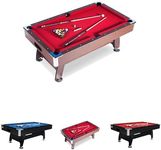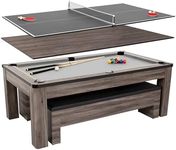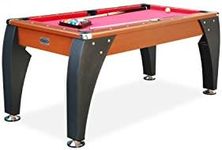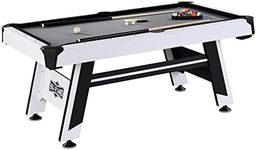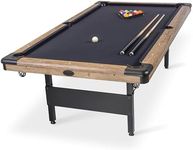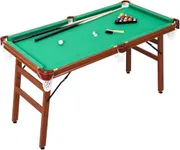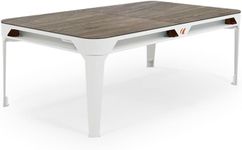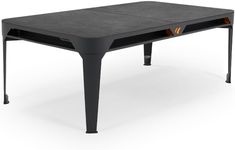Buying Guide for the Best Cheap Pool Tables
Choosing the right pool table can be a fun and rewarding experience. Whether you're looking to add a touch of class to your game room or simply want a fun way to entertain guests, there are several key factors to consider. Understanding these factors will help you make an informed decision and ensure that you get the best value for your money. Here are the key specifications to look out for when shopping for a pool table.SizeThe size of the pool table is crucial because it needs to fit comfortably in your space while allowing enough room for players to move around and take shots. Pool tables typically come in sizes ranging from 7 to 9 feet. A 7-foot table is great for smaller spaces and casual play, while an 8-foot table is a good middle ground for both casual and serious players. A 9-foot table is the standard for professional play and requires a larger room. Measure your space and consider how much room you need around the table for cueing.
MaterialThe material of the pool table affects its durability and playing experience. The most common materials are MDF (medium-density fiberboard) and slate. MDF tables are more affordable and lighter, making them easier to move, but they may not provide the same level of play quality and longevity as slate tables. Slate tables are heavier, more durable, and offer a smoother playing surface, which is why they are preferred for serious play. Consider how often you will use the table and whether you need a more portable option or a long-lasting one.
FeltThe felt on the pool table is the fabric that covers the playing surface. It affects the speed and accuracy of the game. Felt is usually made from a blend of wool and nylon. Higher wool content generally means better quality and durability. Standard felt is suitable for casual play, while worsted wool felt, which is smoother and faster, is preferred for competitive play. Think about how often you will play and whether you need a more durable felt for frequent use.
Frame and LegsThe frame and legs of the pool table provide stability and support. They can be made from various materials, including wood, metal, and composite materials. Solid wood frames and legs are sturdy and offer a classic look, but they can be more expensive. Metal and composite materials can provide good stability at a lower cost. Ensure that the frame and legs are strong enough to support the weight of the table, especially if you choose a slate table. Consider the overall aesthetic you want and the level of stability you need.
CushionsThe cushions, or rails, of the pool table affect the bounce and rebound of the balls. They are typically made from rubber and covered with the same felt as the playing surface. High-quality cushions provide consistent and lively rebounds, which are important for accurate play. Look for tables with K-66 profile cushions, which are the standard for most pool tables. If you are a casual player, standard cushions will suffice, but if you are more serious about the game, investing in higher-quality cushions can enhance your playing experience.
AssemblyAssembly is an important consideration, especially if you plan to set up the table yourself. Some pool tables come pre-assembled, while others require significant assembly. Slate tables, in particular, can be heavy and challenging to assemble without professional help. Consider your comfort level with assembly and whether you have the tools and assistance needed. If you prefer a hassle-free setup, look for tables that offer delivery and professional assembly services.

